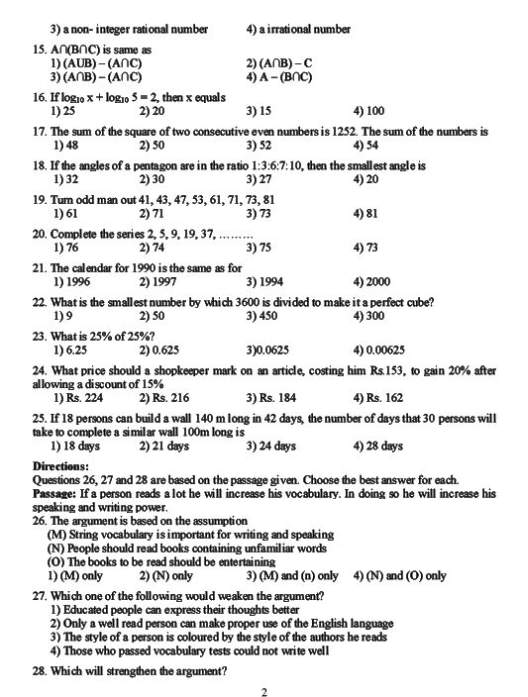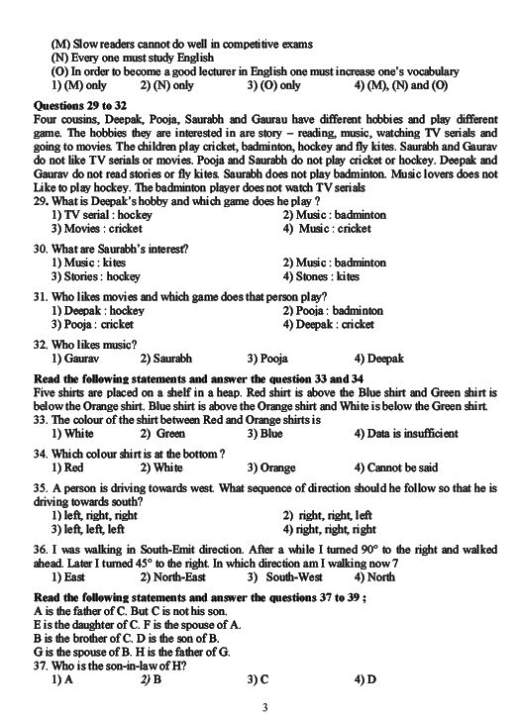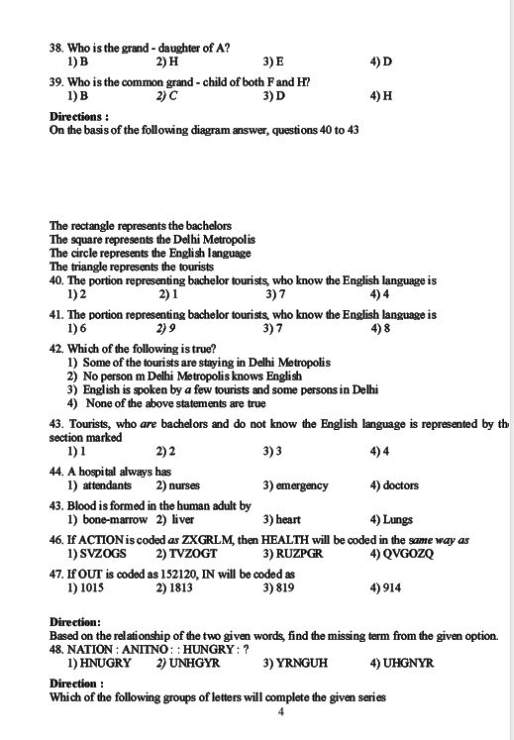| Re: TANCET MCA Entrance Exam Syllabus
TANCET exam consists of the following given subject:-
Algebra:
Fundamental operations in Algebra, Expansion, factorization, simultaneous linear / quadratic equations, indices, logarithms, arithmetic, geometric and harmonic progressions, binomial theorem, permutations and combinations, surds, determinants, matrices and application to solution of simultaneous linear equations.
Co-ordinate Geometry:
Rectangular Cartesian co-ordinates, equations of a line, mid point,intersections etc., equations of a circle, distance formulae, pair of straight lines, parabola,ellipse and hyperbola, simple geometric transformations such as translation, rotation, scaling.
Calculus:
Limit of functions, continuous functions, differentiation of functions(s),Tangents and normal, simple examples of maxima and minima, Integration of function by parts, by substitution and by partial fraction, definite integral application to volumes and surfaces of frustums of a sphere, cone, cylinder, Taylor Series.
Differential Equations:
Differential equations of first order and their solutions, linear differential equations with constant coefficients, homogenous linear differential equations.
Vector:
Position vector, additions and subtraction of vectors, scalar and vector products and their applications to simple geometrical problems and mechanics.
Trigonometry:
Simple identities, trigonometric equations, properties of triangles, solution of triangles, height and distance, inverse function
Probability and Statistics:
Basic concepts of probability theory, Averages, Dependent and independent events, frequency distributions, and measures of dispersions, skewness and kurtosis, random variable and distribution functions, mathematical expectations, Binomial, Poisson, normal distributions, curve fitting, and principle of least squares, correlation and regression.
Linear Programming:
Formulation of simple linear programming problems, basic concepts of graphical and simplex methods
Computer Awareness:
Computer Basics: Organization of a computer, Central Processing Unit (CPU), Structure of instructions in CPU, input / output devices, computer memory, memory organization, back-up devices
Data Representation:
Representation of characters, integers, and fractions, binary and hexadecimal representations, Binary Arithmetic: Addition, subtraction, division, multiplication, single arithmetic and two complement arithmetic, floating point representation of numbers, normalized floating point representation, Boolean algebra, truth tables, Venn diagrams.
Computer Architecture: Block structure of computers, communication between processor and I / O devices, interrupts
Computer Language: Assembly language and high level language, Multiprogramming and time sharing operating systems, Computer Programming in C.
Flow chart and Algorithms
Analytical Ability and Logical Reasoning:
The questions in this section will cover logical reasoning, quantitative reasoning, visuo-spatial reasoning.
|



